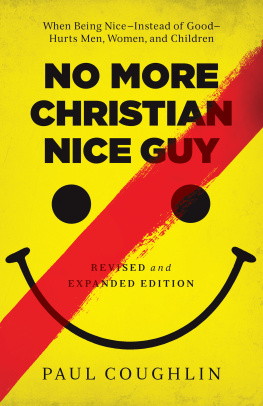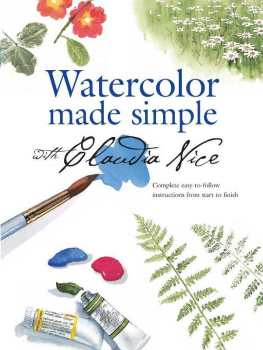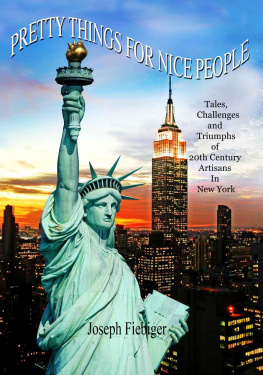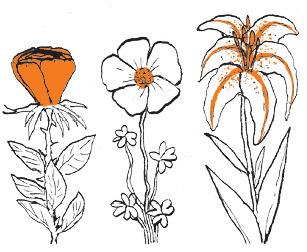The Book of Nice
A Nice Book About Nice Things for Nice People
Josh Chetwynd
Illustrations by Phil McAndrew
Workman Publishing New York
For Jennifer, Miller, and Becca
Contents
Introduction
Nice just doesnt get the love. Few sentiments are so seemingly positive yet receive so much criticism.
If you ever want to say nothing in the most efficient way possible, just say something is nice, a journalist at Publishers Weekly griped in 2011. No other word ostensibly expresses contentment and acceptance while also harboring 14 (approximate) subterranean shades of doubt and pessimism.
Back in the 1980s, legendary funnyman George Carlin was more succinct in explaining his anti-nice stance on the phrase Have a nice day. I know what it is that bothers me about the whole thing, he said. Its the word nice. It is just a weak word. It doesnt have a lot of character.
Ouch.
Nice deserves better. When nice gestures, words or images are executed with proper meaning (and accepted as such), they can be powerful shorthand for many of the virtues we consider important. If you want to convey a significant feeling like respect, love, generosity, inclusiveness or reassurance, nice has your back. For example, its hard to beat a friendly hug as a (non-lusty) sign of affectionand depending on the occasion, there are numerous other options like presenting a box of chocolates, or singing For Hes a Jolly Good Fellow. If youd like to give a little respect, youve got a hat-tip at your disposal. Then theres a wink, which can be deployed when youd like to tell someone youre on the same page. And conjuring up the Tooth Fairy certainly takes away some of the sting of losing a tooth.
Theres actually scientific proof to support the medicinal value of giving and accepting nice behavior. Studies have shown hand-holdingeven clasping a strangers handcan calm an individual in a particularly stressful moment. A well-received compliment stimulates the brain in a positive way and, according to some studies, slurping up a bowl of chicken noodle soup from Grandma does indeed make a difference in your health.
And, lest you think nice guys finish last, consider this: One of Americas first great department store magnates, J. C. Penney, believed treating others nicely was so important, he named his original shop (and the thirty-three that would follow it) the Golden Rule Store. If you want something a little more empirical, a group of researchers at the University of North Carolina once calculated that not being nice (i.e., acting rude) in the workplace costs companies a lot of money (in some cases, billions of dollars) annually in, among other things, lost productivity.
A key component of nice behavior is sincerity.
But at the same time nice isnt a naive concept. Its complicated. Lets start with the word itself. The term wasnt always a good thing. Nice originally stemmed from the Latin word nescius, meaning ignorant, and in early French and English cultures acting nice meant being foolish. It eventually morphed into meaning shy and then fastidious and refined before, in the second half of the eighteenth century, it reached its current primary definitionpleasant, agreeable, or kind. Yet some modern dictionaries have as many as seventeen different explanations for what nice can mean (including such options as suitable or proper and finicky or fussy tastes.) All this leaves some bewildered as to what theyre really saying.
Actions that are characterized as nice arent any simpler. Many traditions discussed in this book took time to earn nice status and feature compelling twists. For instance, the phrase bless you was developed by a nervous Pope during an ancient plague; the saying eat, drink, and be merry was originally a cautionary statement; and the literary ancestors of fairy godmothers ruined a persons future as often as they granted his or her wishes. Even the story behind slapping hands up top (aka the high five) is full of disagreement and heartbreak.
These complexities sometimes make it hard to identify nice. Nice deeds can often move on or off the list based on shifts in popular culture. Take opening a door for a lady. In polite society, it was a no-brainer a couple of generations ago. Now there are those who find it sexist and believe that rather than nice, its a patronizing action. On the other hand, a few decades ago hand writing a letter to a friend wouldnt have been seen as niceit was simply a way in which we interacted. But before longif not alreadyemail, texting, social media, and other more advanced forms of communication will make the handwritten letter more of a quaint nicety than a necessary task. (It didnt make it into this book, but if theres a sequel it might be a good candidate.)
Another problem nice faces is cynicism. A key component of nice behavior is sincerity. If youre told you look beautiful, the impact of that statement hinges on whether the speaker truly means it (or the recipient, genuinely believes it); If the words are sincere then its a compliment, but if theyre not, its hollow flattery or, worse, a form of ridicule. A wink suffers from the same uncertainty. It can be a sweet gesture or it can come off as lecherous. It all depends on context and intentions.
There are many who like to tweak what would normally be nice behavior in negative ways (like offering a healthy serving of sarcasm with a thank-you or mockingly applauding another). Those disingenuous moments leave some ill-equipped to assume the best in others. Alternatively, nice behavior is often considered synonymous with manners, which are perceived as something you go through the motions doing without any real meaning. (Applied properly, the intention of manners has long been to give legitimate signs of regard or deference to others.) The upshot is many folks recoil at seemingly nice acts, turned off by the uncertainty of it all.
If Ive done my job well, youll discover examples and discussion of these themes embedded in the following pages and, maybe, this book will even cut through some of the vagueness at the root of nice. But, more than anything, my hope is youll find this a fun read featuring the colorful origins and backgrounds of what we identify as all things nice.
Many folks recoil at seemingly nice acts, turned off by the uncertainty of it all.
While this book aims to be comprehensive, it isnt exhaustive. There were some things on the edge of nice that just didnt have enough unanimity to make the cut here. Moreover, nice is driven by local traditions. For example, in Japan bowing has very different rules and connotations than in the U.S. Recognizing that, this book primarily focuses on the niceties of the Western world (and even more specifically those of English-speaking folks) because I wanted to highlight what would be most relevant to the majority of this volumes readers. Nevertheless, where appropriate Ive pointed out contrasts or similarities from elsewhere around the globe.
Finally, I must admit Ive got a soft side. So if in the end, learning the history of charity, smiling, or saying please (or any other nice moves) leads to a little more fondness for the concept or inspires you to put a bit of nice into practice, well then, all the better.
Nice Handiwork
Applause
Next page

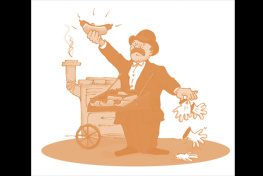
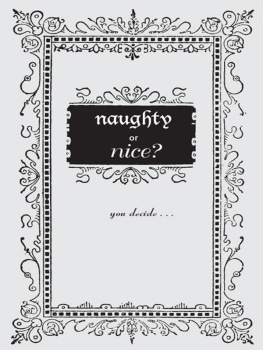
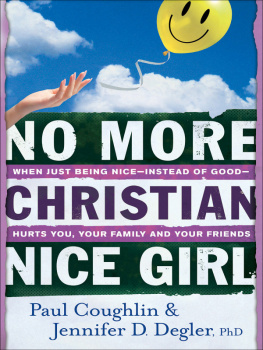
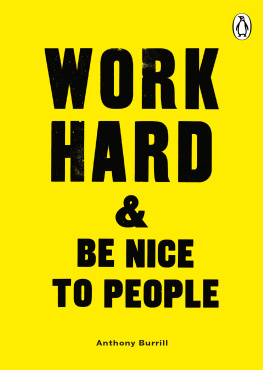
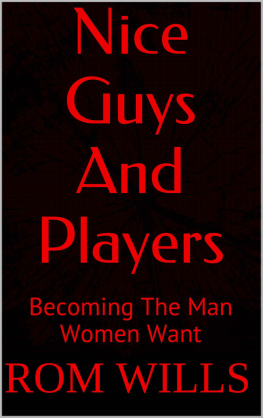
![Stack - It is just you, everythings not shit: [a guide to all things nice]](/uploads/posts/book/253795/thumbs/stack-it-is-just-you-everything-s-not-shit-a.jpg)

